For those who have travelled with me in the past will know how much I love to mix it up in the field with fine art photography styles. I always keep an eye out for different opportunities, to push the boundaries and try something new. Fine art is definitely my favourite style of photography as I feel like it amplifies the story you are trying to tell. I must say, however, that I only attempt these different styles once I have 'got the shot'. I always suggest to guests, and remind myself, that you should probably get 3-5 'insurance shots' before going crazy, so to speak. So today I'll briefly discuss 5 different ways to shoot that I will definitely keep in mind while I'm out in the Mara.
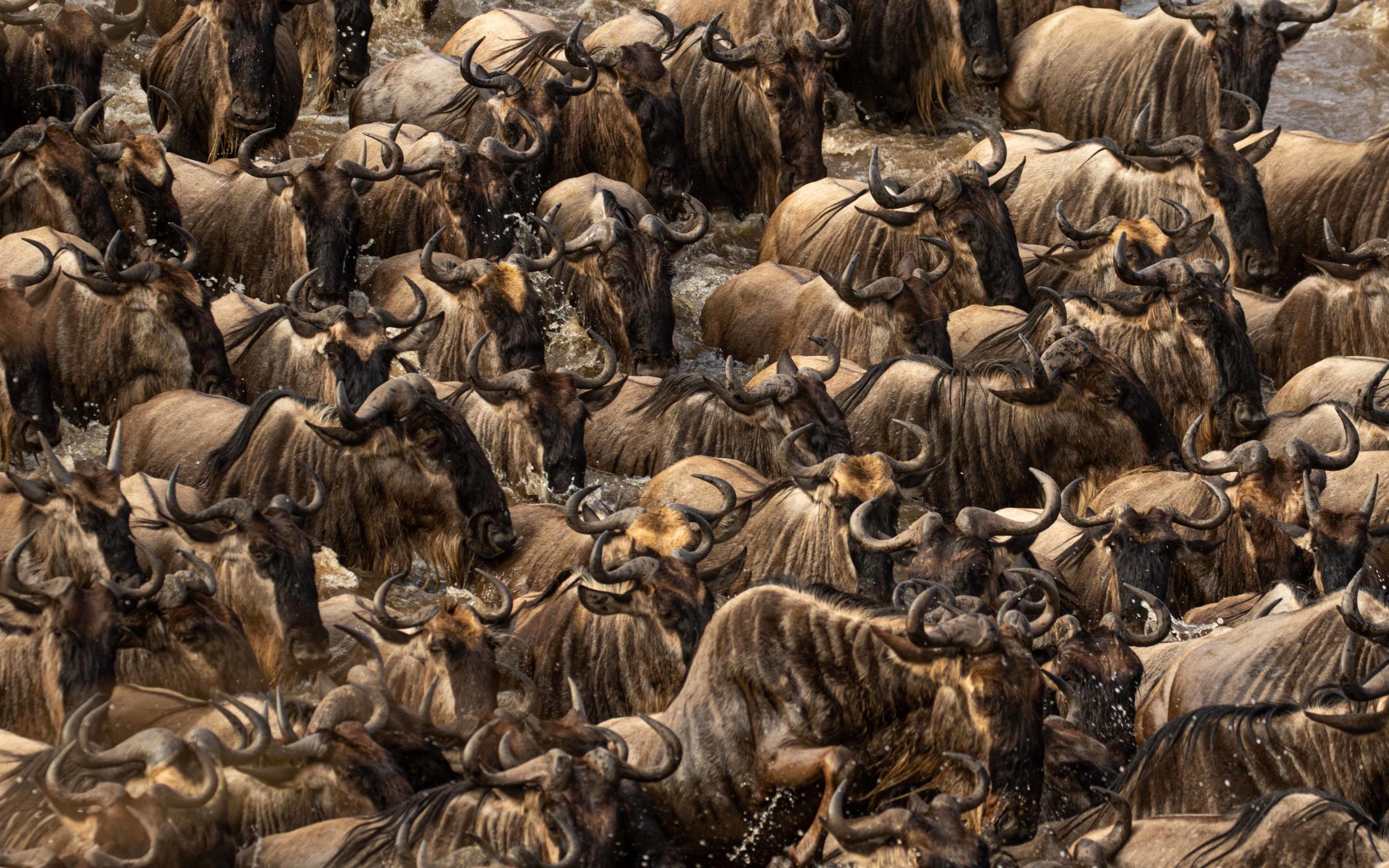
The diagonal. We often shoot herds moving left to right in the frame but I find that if you shot in a diagonal it adds to the drama of the movement. So let me try explain a bit more... in your framing, if you were to draw an imaginary line from top left corner to the bottom right corner you would have your 'diagonal'. As the wildebeest are moving through the river or down the bank try line up the general movement of the heard with your imaginary line and take the shot as I have done on the right. This accentuates the 'rush' and the movement of the animals. This works really well in the Mara as often you are shooting at awkward angles anyway due to limited vehicle positioning so it really works in our favour. This can also be applied to leopards descending trees or perhaps any animal descending any high point. Its hard to find the exact words for what effect this has on the image or storytelling but I almost get the feeling that the animals are trying to jump out the frame which is a powerful feeling that is instilled in any image if you can create that kind of storytelling.
High contrast. Being in the Mara with lots of grass gives us an awesome opportunity to play around with contrast and your subject. Grass acts as a beautiful frame and should you choose to 'blow it out' by over exposing then you can create a wonderful high key shot making your subject pop. You can achieve this by slightly over exposing (depending on your shooting conditions of course). It may also create a soft frame for your subject to stand out in. Alternatively, should you use the bright light on your subject and lightly under expose, you will then accentuate everywhere the light hits. Like over exposing this method will greatly emphasise your subject as you see on the right. Using postproduction vignetting and graduated filters you can further under expose the grass and 'pop' your subjects whites and highlights creating a moody image as I have done on the right.
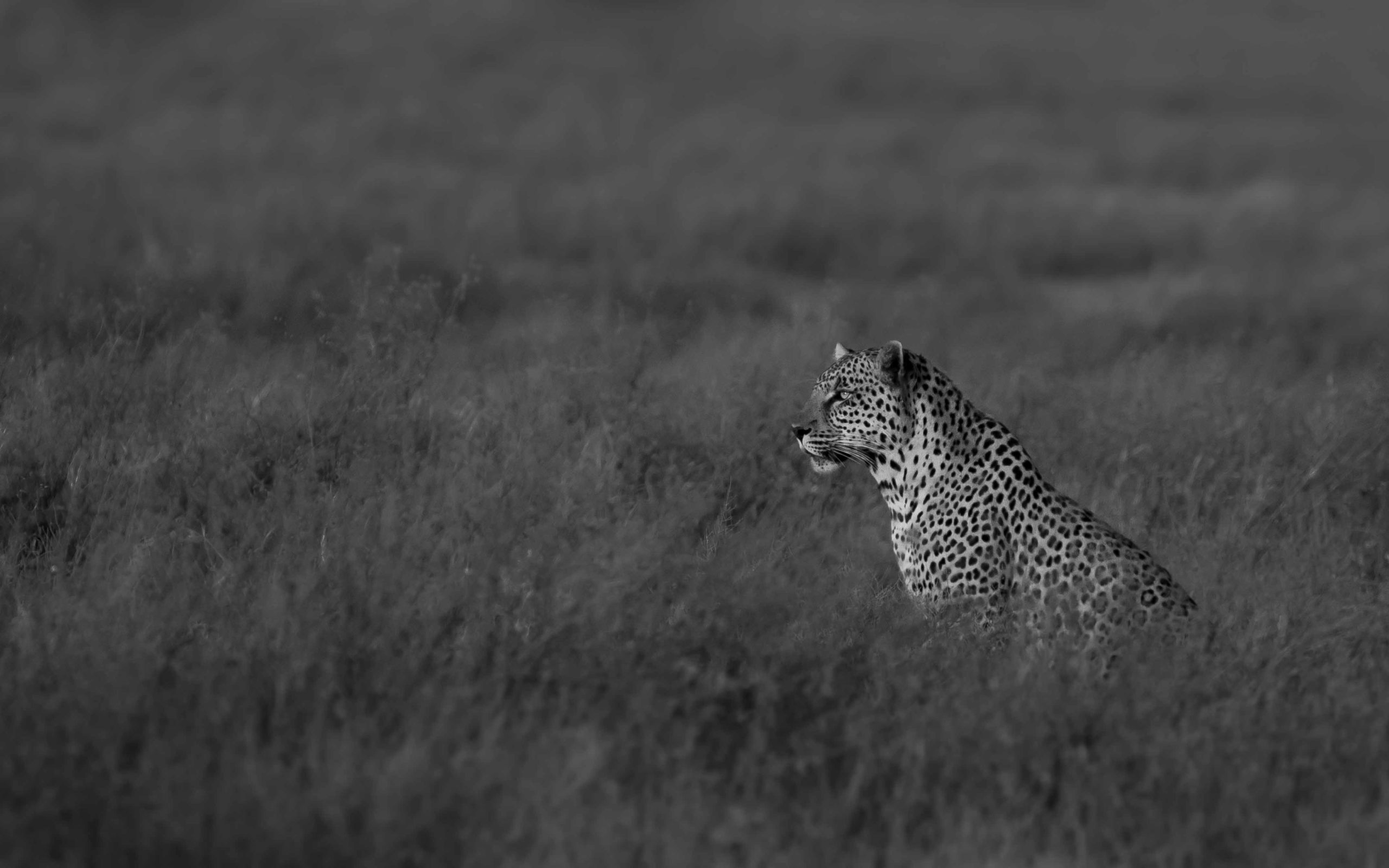
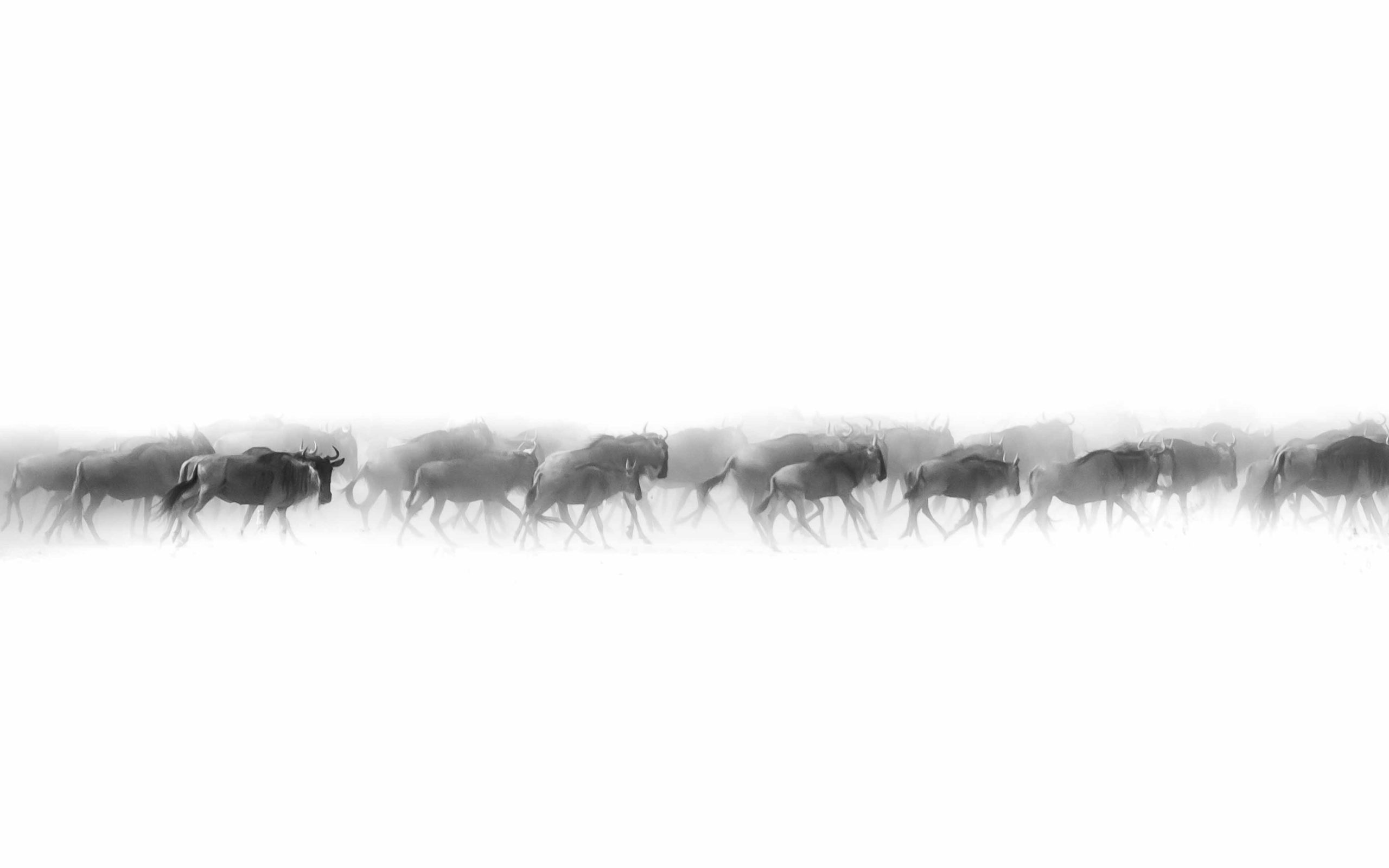
Movement and fine art. As discussed earlier, one of the most effective ways to approach fine art is using high key. This is great because if you are overexposing you may be losing shutter speed, but, that is actually what we want. This is slightly different to my first image in the blog as we are purposely shooting the horizontals but there is a reason for it. In this case our position only allowed for horizontal framing and it is easier on the eye for this shot. With the lower shut speed and an fstop of about f4,5 - f5 we can achieve a slight motion blur, a high key shot and blow out some of the wildebeest in the background. By doing this we can create an immense amount of focus and motion blur on the subjects closer to us so when we put it into post production we can erase the fore and background and create a high key fine art shot with motion blur to tell a story of movement which ultimately is a common theme in the migration. I was lucky to capture a wildebeest to the left who's timing in looking at the camera was perfect.
Single subject focus. This is such a great opportunity to drop that fstop and try single out a subject in the herd to focus on. This creates an interesting story telling technique and may give the onlooker a feeling of calm vs chaos which we certainly see a lot of in migration tour. This works particularly well with zebra vs wildebeest. If you can focus on the zebra as your main subject then the wildebeest becomes and awesome and interesting frame and talk about contrast. I am yet to get one of these scenarios that I am happy with and I cannot wait to arrive at the Mara camp tomorrow to have another go at it so for now I rather enjoyed how this image of mine came out with one lone wildebeest breaking from the herd in the river for a brief moment. Such is life right? It would be interesting to see what your take on the story would be in this image.
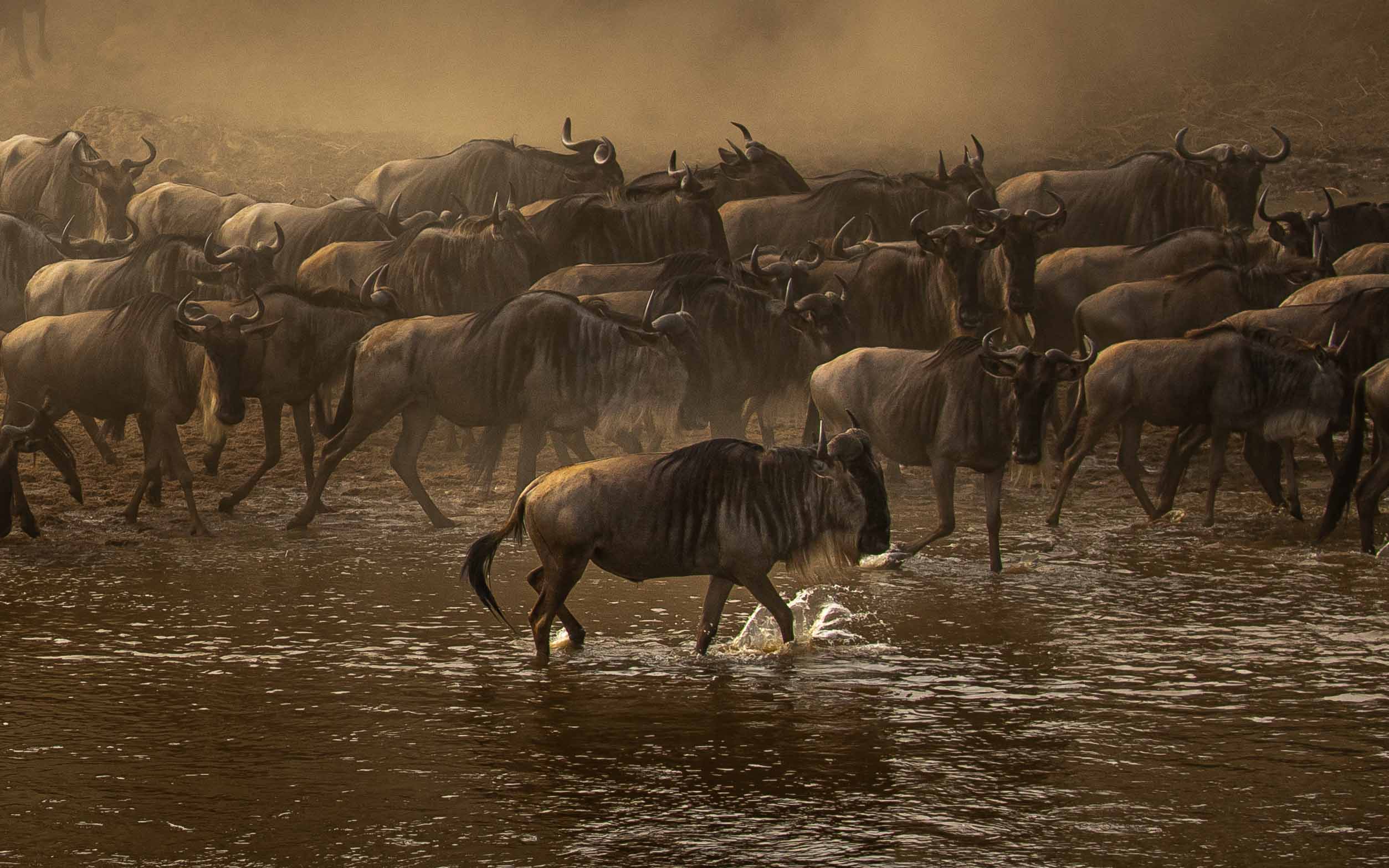
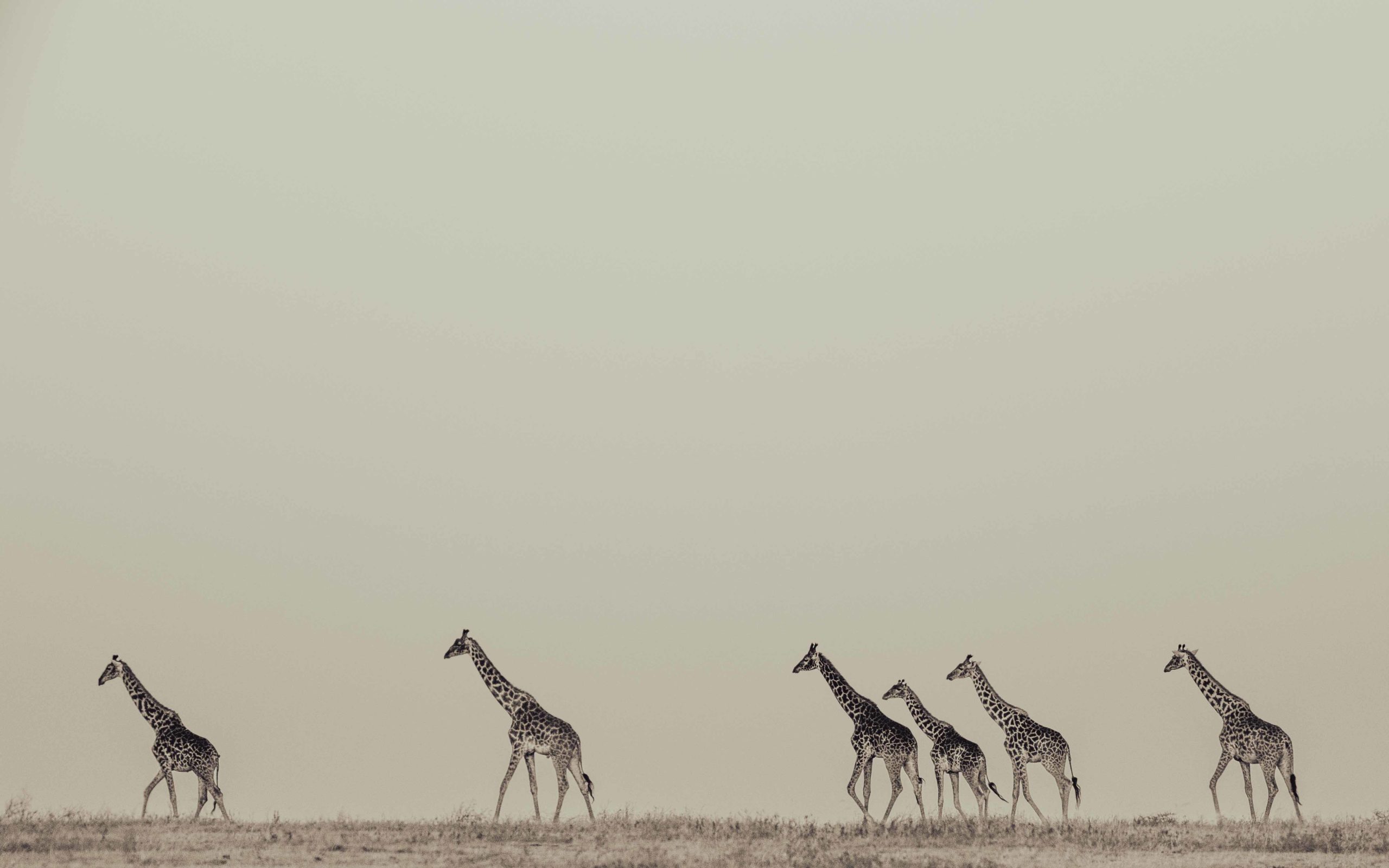
Big skies. It is not often you get the chance to photograph Africas biggest and tallest animals in front of an endless sky. I always say, put as much sky as you can possibly fit in. In this image on the right the giraffe, Africa tallest mammal, is dwarfed by the 'big blue' and I find that there is a powerful story in that. We are all small in the greater scheme? Either way, it creates a powerful story. It wold be even more ideal if you could add in some storm clouds to add the drama. In this image I have chosen a more sepia approach as I feel it was a more calming edit which compliments the giraffe and their movements. I have also chosen to blow out the sky by slightly over exposing my shot to bring out detail in the giraffe as I didn't need any cloud detail.

I hope these few techniques help and perhaps give you a few more options when you're out in the field. These are just ideas that I try keep in my photography arsenal for the time is right so don't forget to get your 'insurance' shots first before trying these out. The beauty of fine art is that you can apply these techniques under less favourable conditions which will extend your opportunities for great shots. Enjoy experimenting and story telling!
Until next time,
Matt
